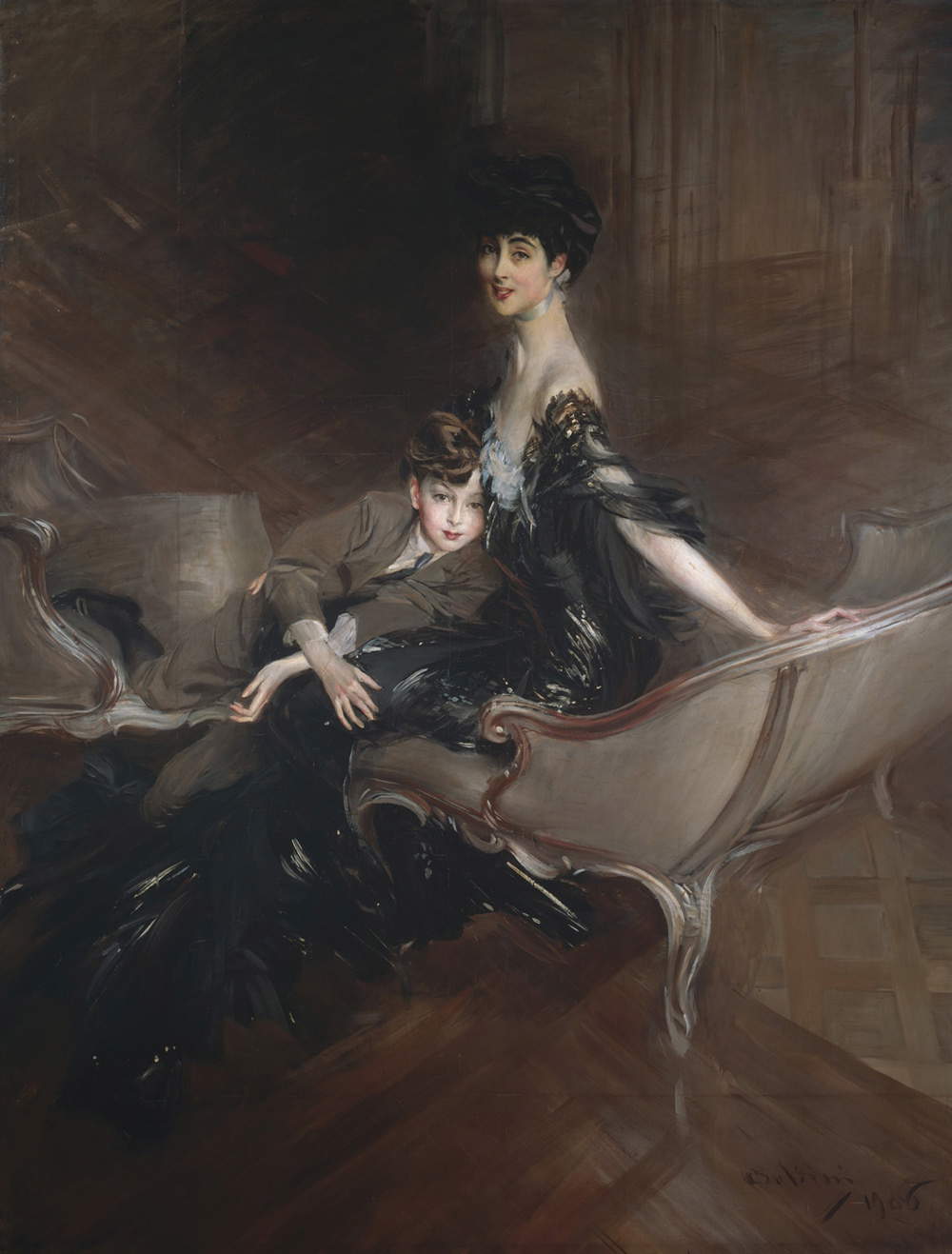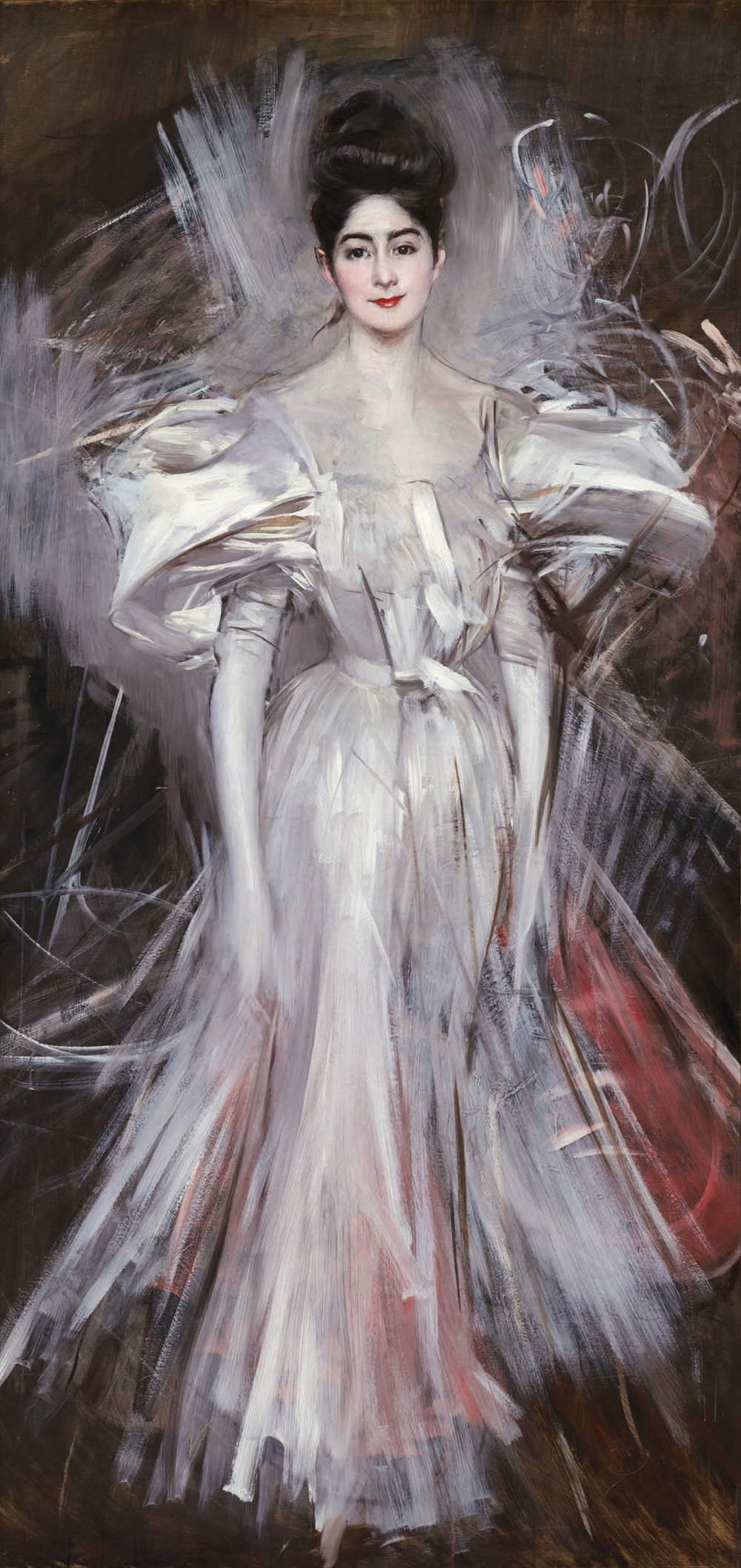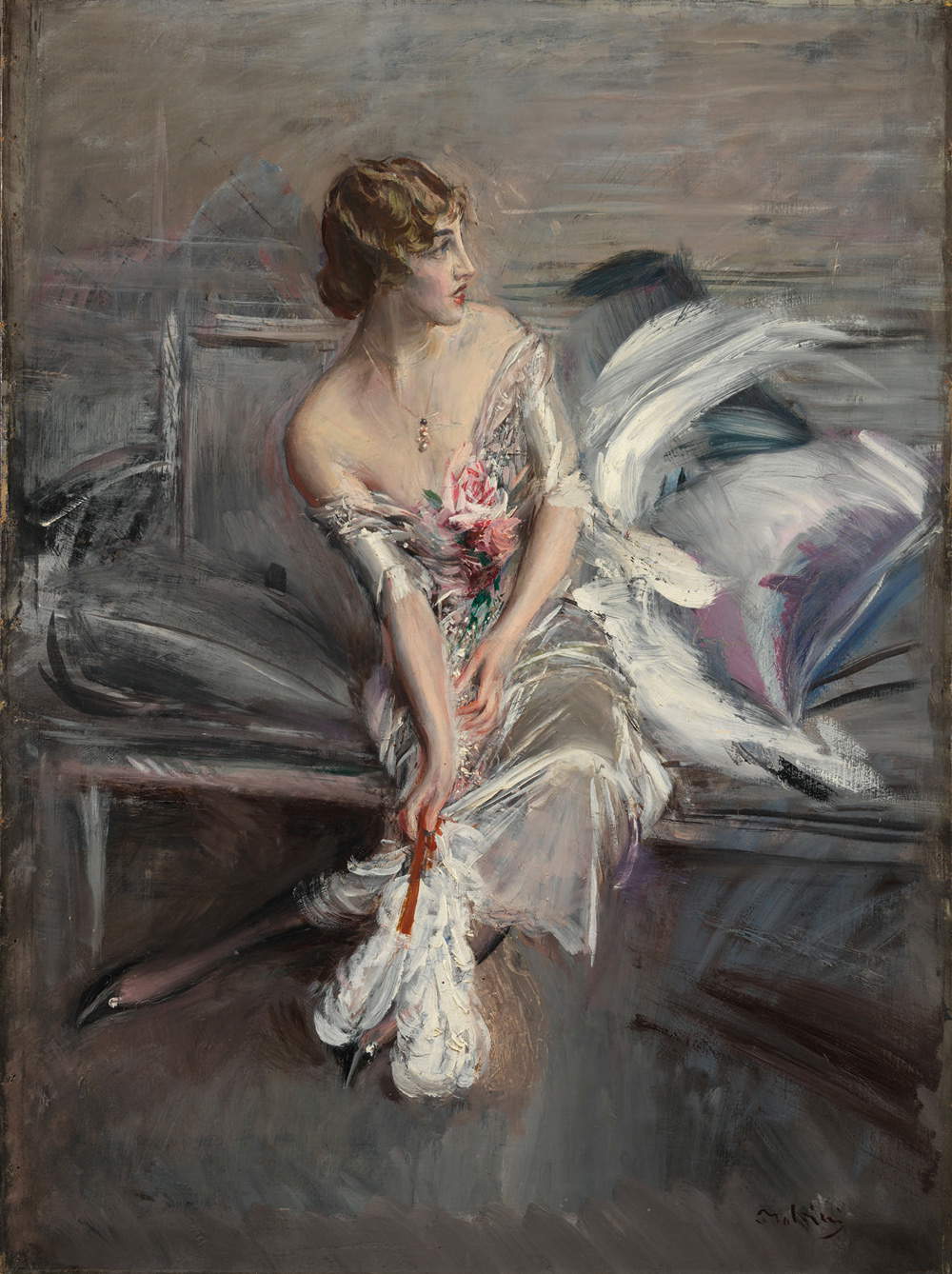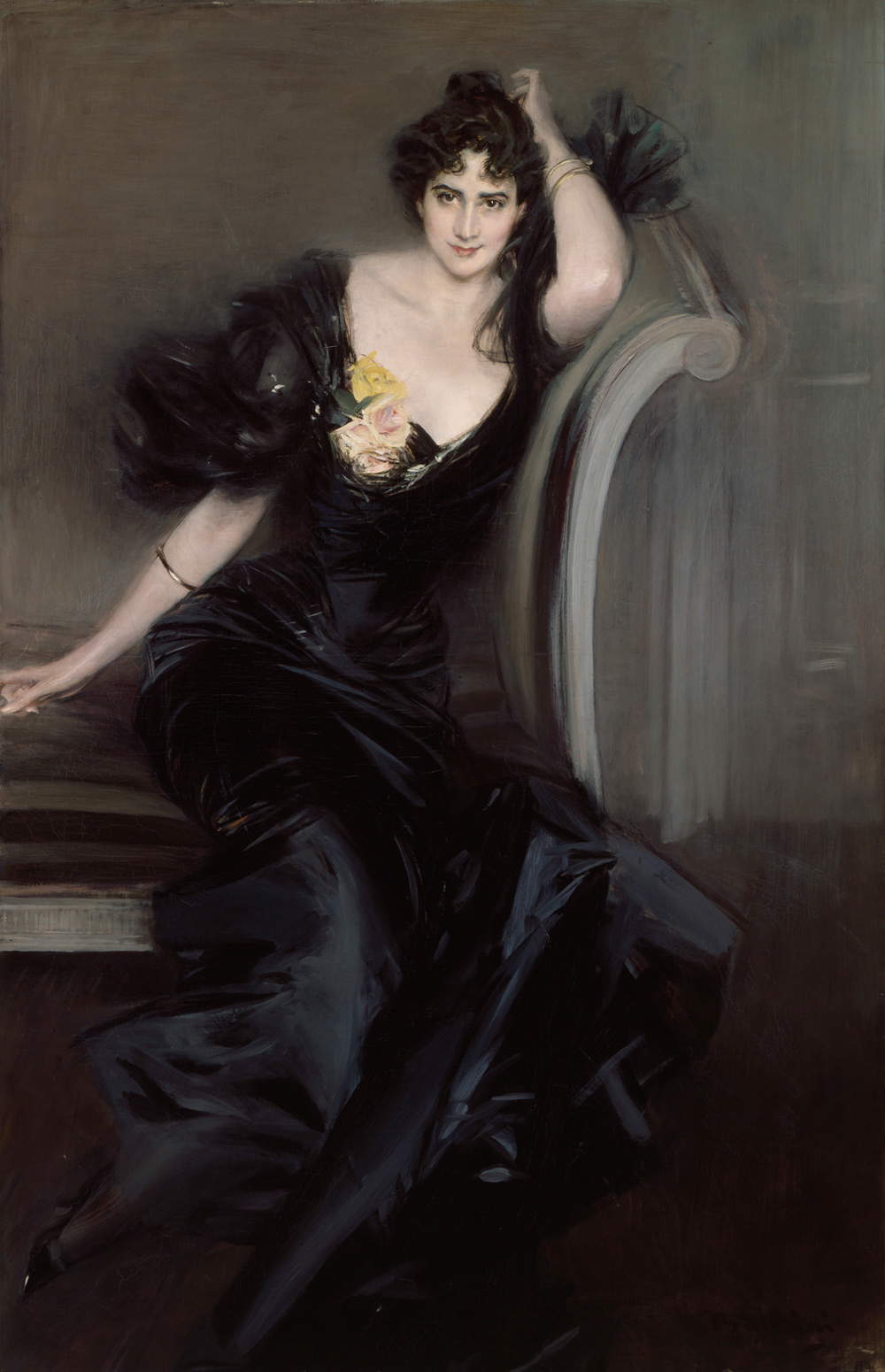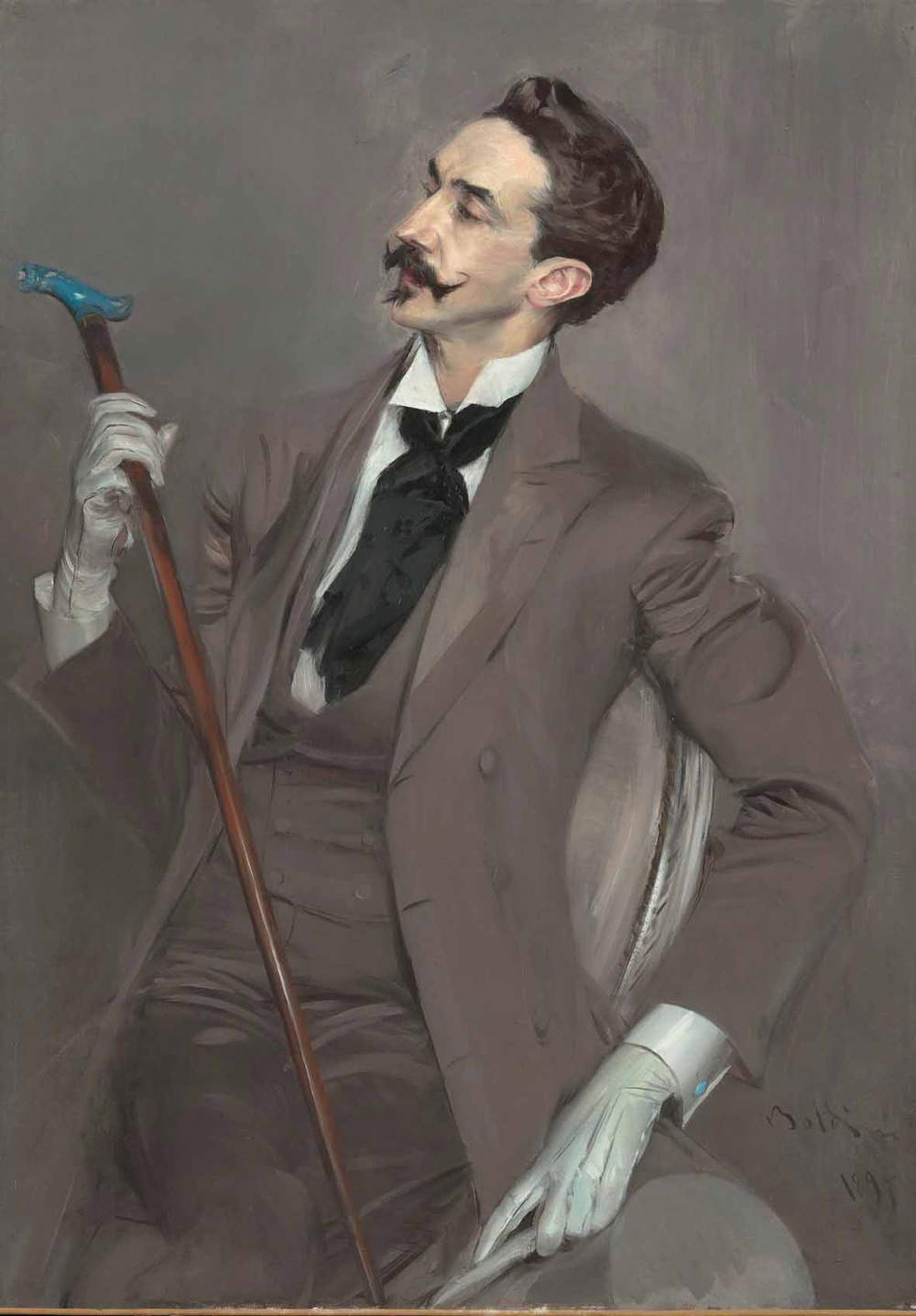by Redazione , published on 25/12/2018
Categories: Exhibitions
/ Disclaimer
Ferrara, Palazzo dei Diamanti is hosting the exhibition 'Boldini and Fashion' from February 16 to June 2, 2019, which analyzes for the first time the relationship between Giovanni Boldini and fashion.
From February 16 to June 2, 2019, Palazzo dei Diamanti in Ferrara is hosting the exhibition Boldini and Fashion, totally dedicated to the relationship that one of the great artists of the late 19th century, Giovanni Boldini (Ferrara, 1842 - Paris, 1931), had with fashion. Certainly... not a new theme: in fact, in July 1931, on the occasion of the first retrospective held in Paris, Vogue magazine dedicated precisely to Boldini, who had died only a few months earlier, an article with the emblematic title: Giovanni Boldini. Painter of Elegance. At the moment when the portrait painter who had been the arbiter of Parisian taste for decades left the scene, so began the myth of an artist who, having created a disruptive and modern canon of beauty and style, would inspire generations of fashion designers, from Christian Dior to Giorgio Armani, Alexander McQueen to John Galliano. The magnetism of Boldini’s portraits, in which his models appear worldly, confident of themselves and their power of seduction, owes much to the relationship the painter had with the burgeoning glamour and celebrity industry to which he, in turn, made a major contribution.
Organized by the Ferrara Arte Foundation and the Giovanni Boldini Museum in Ferrara, the exhibition Boldini and Fashion, curated by Barbara Guidi with the collaboration of Virginia Hill, will tell the story of this fascinating link for the first time: the result of a long study that through documents has enabled the reconstruction of the artist’s dense network of social and professional relationships, the exhibition will in fact show how Boldini was able to make himself an interpreter of the fashion of the time to the point of influencing its choices, on a par with a contemporary trendsetter. Established in 19th- and 20th-century Paris, the crossroads of every trend in taste and modernity, Boldini immortalized the voluptuous elegance of the cosmopolitan elites of the Belle Époque. His talented brush delivered to posterity the images of the protagonists of that mythical epoch (from Robert de Montesquiou to Cléo de Mérode, from Consuelo Vanderbildt to the Marquise Casati), contributing to making them true glamorous icons.
Captured initially for that quintessence of modern life, an element that anchors the work to the contemporary, fashion (understood as dress, accessory, but also sophisticated expression that transforms the body into a place of desire) soon becomes an essential and distinctive attribute of her portraiture. Thanks to a painting that combines a nervous and dynamic brushstroke with the emphasis on mannered and sensual poses designed to enhance both the silhouettes of the models and the lines of their clothes (and with the complicity of the creations of the great couturiers Worth, Doucet, Poiret and the Callot Sisters) Boldini gives life to a personal declination of the society portrait that becomes a veritable canon, a model of style and trend that anticipates formulas and languages of twentieth-century cinema and fashion photography.
The Palazzo dei Diamanti exhibition’s itinerary consists of more than one hundred works and will bring together splendid paintings, drawings and engravings by Boldini and his colleagues Degas, Manet, Sargent, Whistler, Seurat, Blanche and Helleu with wonderful period clothing, books and precious objects. Arranged in thematic sections, each sponsored by literati who helped make fashion a founding element of the poetics of modernity, from Charles Baudelaire to Oscar Wilde, Marcel Proust to Gabriele D’Annunzio, the exhibition will reveal the evocative interweavings of art, fashion and literature that marked the fin de siècle and, evoking the backdrop of worldliness, charm and sophistication that served as the backdrop for Boldini’s long career, will immerse visitors in the refined and glittering atmospheres of the French metropolis and all its elegant hedonism.
The exhibition is open daily from 9 a.m. to 7 p.m. For more information you can log on to the Palazzo dei Diamanti website. Below are images of some of the works on display.
 |
| Giovanni Boldini, Consuelo Vanderbilt, Duchess of Marlborough, and her son Lord Ivor Spencer-Churchill (1906; oil on canvas; New York, Metropolitan Museum of Art) |
 |
| Giovanni Boldini, Firework (1892-95; oil on canvas; Ferrara, Museo Giovanni Boldini) |
 |
| Giovanni Boldini, Gladys Deacon (1916; oil on canvas; Private collection) |
 |
| Giovanni Boldini, Gertrude Elizabeth (née Blood), Lady Colin Campbell (1894; oil on canvas; London, National Portrait Gallery) |
 |
| iovanni Boldini, Portrait of M.me Charles Max (1896; oil on canvas; Paris, Musée d’Orsay) |
 |
| Giovanni Boldini, Count Robert de Montesquiou (1897; oil on canvas; Paris, Musée d’Orsay Paris) © RMN-Grand Palais (Musée d’Orsay) / Hervé Lewandowski |
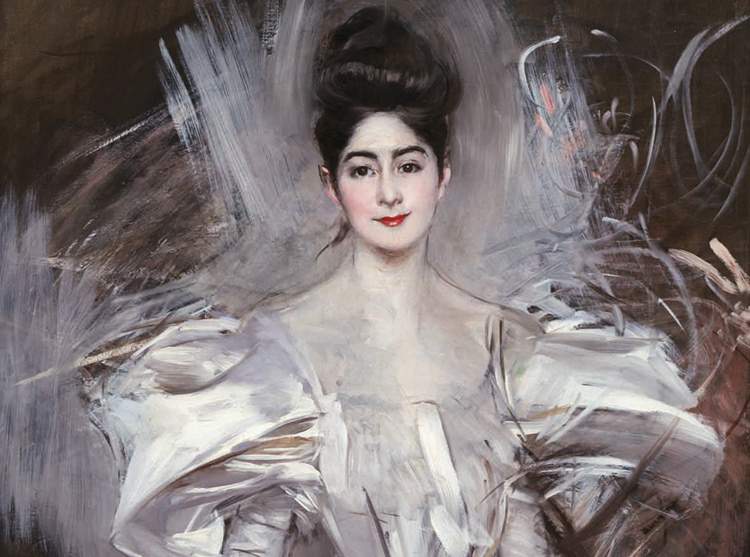 |
| Giovanni Boldini and fashion on display for the first time. In Ferrara, Palazzo dei Diamanti. Photos |
Warning: the translation into English of the original Italian article was created using automatic tools.
We undertake to review all articles, but we do not guarantee the total absence of inaccuracies in the translation due to the program. You can
find the original by clicking on the ITA button. If you find any mistake,please contact us.
